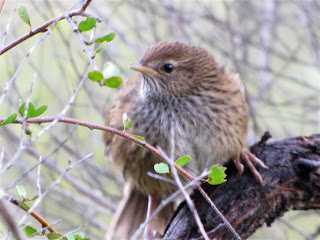Population Estimate: 250M - 1B
Range / Habitat: Found in open country, from coast to subalpine throughout Europe, Asia and northern Africa. Introduced to western North America, Hawaii, Australia and New Zealand.
Field Notes: Medium-sized passerine, spotted brown on upper parts and breast, generally buff underneath. Yellow bill and white eyeing. Adult with small crest when alert. In flight, often with M-shaped, broad wings and white outer tail feathers and white trailing edge. Male territorial flight display, singing a sustained and vigorous torrent of varied trills and runs. New Zealand Pipit lacks crest, has dark bill, and is frequently flicking tail up and down. Song Thrush with boldly spotted chest, dark bill, no white markings to face.
Personal Notes: Seen and heard several times before finally photographed outside Auckland.














